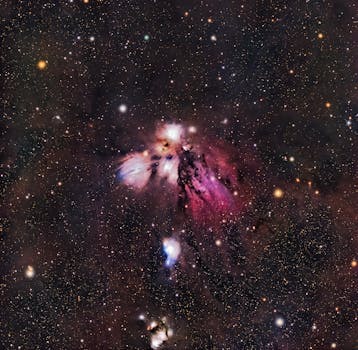
“
Introduction to the Cosmos
Focus Keyword: Beyond the Milky Way, the universe is full of mysteries and wonders waiting to be uncovered. For centuries, humans have been fascinated by the night sky and the secrets it holds. From the ancient Greeks to modern-day astronomers, the study of the universe has been a driving force behind human curiosity and innovation. In this article, we will explore the vast expanse of the universe, beyond the Milky Way, and discover new worlds and possibilities.
The Milky Way and Beyond
The Milky Way is just one of billions of galaxies in the observable universe. It is a barred spiral galaxy, consisting of hundreds of billions of stars, as well as various types of interstellar gas and dust. The Milky Way is thought to have formed around 13.6 billion years ago, during the early days of the universe. However, there is still much to be learned about the history and evolution of our galaxy, and the universe as a whole. For a deeper understanding of our cosmic environment, check out Galaxies of Dreams.
Exploring the Universe
Space exploration has come a long way since the launch of the first artificial satellite, Sputnik, in 1957. Today, we have a fleet of spacecraft and telescopes that allow us to study the universe in unprecedented detail. From the Hubble Space Telescope to the Kepler Space Telescope, these instruments have revolutionized our understanding of the cosmos. We have discovered thousands of exoplanets, some of which are believed to be capable of supporting life. The quest for knowledge is akin to Soaring Through the Cosmos.
New Worlds and Possibilities
The discovery of exoplanets has opened up new possibilities for the search for life beyond Earth. While we have yet to find definitive evidence of extraterrestrial life, the existence of exoplanets has shown us that the conditions for life to arise are not unique to our planet. The search for life beyond Earth is an active area of research, with scientists using a variety of methods to detect biosignatures in the atmospheres of exoplanets.
The Search for Life Beyond Earth
The search for life beyond Earth is a complex and challenging task. It requires the development of new technologies and instruments, as well as a deeper understanding of the conditions necessary for life to arise. Scientists are currently using a variety of methods to search for life, including the study of exoplanet atmospheres, the search for radio signals, and the exploration of our solar system. While we have yet to find definitive evidence of extraterrestrial life, the search for life beyond Earth is an exciting and ongoing area of research.
The Future of Space Exploration
The future of space exploration is bright, with a new generation of spacecraft and telescopes on the horizon. The James Webb Space Telescope, scheduled to launch in 2023, will allow us to study the universe in unprecedented detail. The telescope will be able to observe the formation of the first stars and galaxies, as well as the formation of planets and the emergence of life. Other upcoming missions, such as the Europa Clipper and the Mars 2020 rover, will explore our solar system and search for signs of life.
Takeaways
- The universe is full of mysteries and wonders waiting to be uncovered.
- The Milky Way is just one of billions of galaxies in the observable universe.
- Space exploration has come a long way since the launch of the first artificial satellite, Sputnik, in 1957.
- The discovery of exoplanets has opened up new possibilities for the search for life beyond Earth.
- The search for life beyond Earth is an active area of research, with scientists using a variety of methods to detect biosignatures in the atmospheres of exoplanets.






